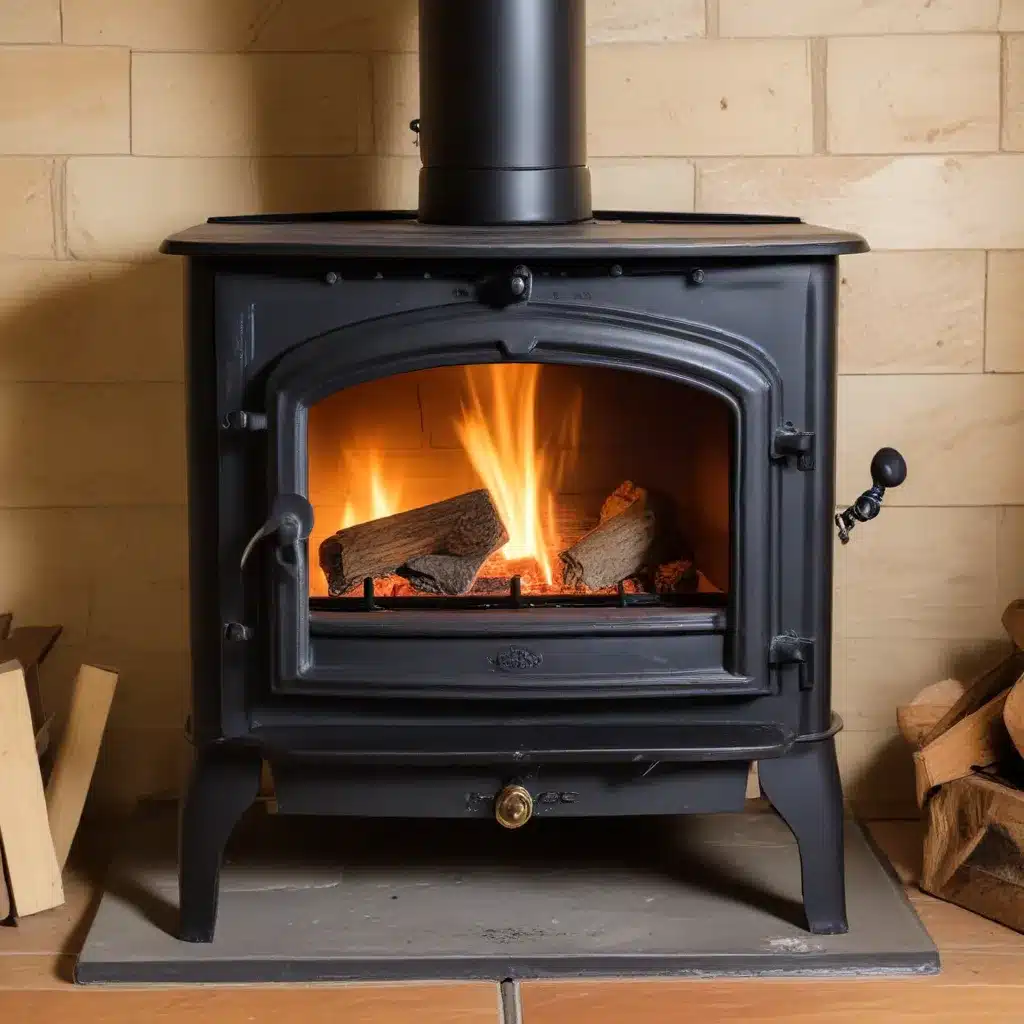
Understanding the Importance of Wood Stove Maintenance
Maintaining a wood stove is crucial for ensuring its safe, efficient, and long-lasting operation. A well-maintained wood stove not only provides reliable heat but also reduces the risk of hazards, such as chimney fires and carbon monoxide buildup. By following a comprehensive maintenance routine, wood stove owners can enjoy the cozy ambiance and cost-saving benefits of their heating appliance for years to come.
The Dangers of Neglected Wood Stove Maintenance
Neglecting wood stove maintenance can have serious consequences, both for the safety of your home and the longevity of your investment. Buildup of creosote, a tar-like substance that forms in the chimney, can lead to dangerous chimney fires. Improperly functioning air intake systems or blocked chimneys can also result in the dangerous accumulation of carbon monoxide, a colorless and odorless gas that can be life-threatening. Regular maintenance helps mitigate these risks and ensures your wood stove operates at peak efficiency.
Establishing a Consistent Maintenance Routine
Developing and adhering to a consistent maintenance routine is the key to keeping your wood stove in top condition. This routine should encompass a range of tasks, from daily cleaning to seasonal inspections and professional servicing. By breaking down the maintenance process into manageable steps, you can ensure your wood stove remains a safe, efficient, and long-lasting heating solution.
Daily Cleaning and Ash Removal
One of the most critical aspects of wood stove maintenance is the daily removal of ashes and debris. Allowing ash buildup can restrict airflow, reduce combustion efficiency, and even pose a fire hazard. Carefully scoop out ashes and dispose of them in a metal container, keeping the stove’s interior clean and clear.
Weekly or Bi-Weekly Inspections
In addition to daily ash removal, it’s essential to conduct regular inspections of your wood stove’s components. This includes checking the condition of the door gaskets, ensuring the air intake vents are unobstructed, and examining the overall structural integrity of the stove. Addressing any issues promptly can prevent more significant problems down the line.
Seasonal Maintenance Tasks
As the seasons change, your wood stove maintenance routine should adapt to address specific concerns. In the fall, thoroughly clean the stove’s interior, inspect the chimney for any blockages or creosote buildup, and perform necessary repairs or replacements. Before the winter heating season, ensure the stove is ready for heavy use by testing all its functions and making any necessary adjustments.
Professional Servicing and Cleaning
Even with diligent DIY maintenance, it’s recommended to have your wood stove professionally serviced and cleaned at least once a year, or as recommended by the manufacturer. A qualified technician can perform a comprehensive inspection, identify any hidden issues, and thoroughly clean the stove and chimney to maintain optimal performance and safety.
Maintaining Wood Stove Efficiency and Longevity
Proper maintenance not only ensures the safety of your wood stove but also enhances its efficiency and extends its lifespan. By implementing the following techniques, you can maximize the heating output and minimize the environmental impact of your wood-burning appliance.
Choosing the Right Firewood
The type and quality of firewood you use can significantly impact the efficiency and cleanliness of your wood stove’s operation. Opt for well-seasoned, dry hardwoods, such as oak or maple, which burn hotter and produce less creosote buildup than softwoods or green, unseasoned wood.
Optimizing Airflow and Combustion
Ensure your wood stove’s air intake vents are clear and functioning correctly, allowing for proper airflow and efficient combustion. Regularly clean the stove’s interior, removing any obstructions that could restrict airflow and reduce heat output.
Monitoring and Adjusting Burn Rates
Familiarize yourself with your wood stove’s burn rate settings and adjust them as needed to maintain an optimal, clean-burning fire. Avoid letting the fire burn too hot or too low, as either extreme can lead to increased creosote buildup or inefficient combustion.
Addressing Creosote Buildup
Creosote accumulation in the chimney is a common issue that requires vigilant attention. If left unchecked, this flammable substance can lead to dangerous chimney fires. Regularly inspect the chimney and schedule professional cleanings to remove any significant creosote deposits.
Replacing Worn Components
Over time, various components of your wood stove, such as gaskets, firebricks, and baffles, may become worn or damaged. Replacing these parts according to the manufacturer’s recommendations is essential for maintaining the stove’s safety, efficiency, and longevity.
Embracing Sustainable Heating Solutions
As environmental concerns continue to shape our energy landscape, the importance of sustainable heating methods, like wood stoves, becomes increasingly evident. By properly maintaining your wood stove and exploring other eco-friendly heating options, you can reduce your carbon footprint and contribute to a more sustainable future.
Exploring Alternative Fuel Sources
In addition to traditional firewood, consider exploring alternative fuel sources that can be burned in your wood stove, such as wood pellets or compressed wood logs. These fuels often burn cleaner and more efficiently, reducing emissions and creosote buildup.
Upgrading to High-Efficiency Wood Stoves
If your existing wood stove is outdated or inefficient, consider upgrading to a newer, high-efficiency model. These stoves are designed to burn wood more cleanly and with greater heat output, often incorporating advanced features like catalytic combustors or secondary air systems.
Incorporating Renewable Energy Sources
Combine your wood stove with other renewable energy sources, such as solar panels or a heat pump, to create a comprehensive, eco-friendly heating system for your home. This integrated approach can further reduce your reliance on fossil fuels and your overall carbon footprint.
By mastering the art of wood stove maintenance and embracing sustainable heating solutions, you can enjoy the cozy ambiance and cost-saving benefits of your wood-burning appliance while contributing to a more environmentally responsible future. Remember, a well-maintained wood stove is not only safer but also more efficient and longer-lasting, making it a wise investment in your home’s comfort and the health of our planet.


